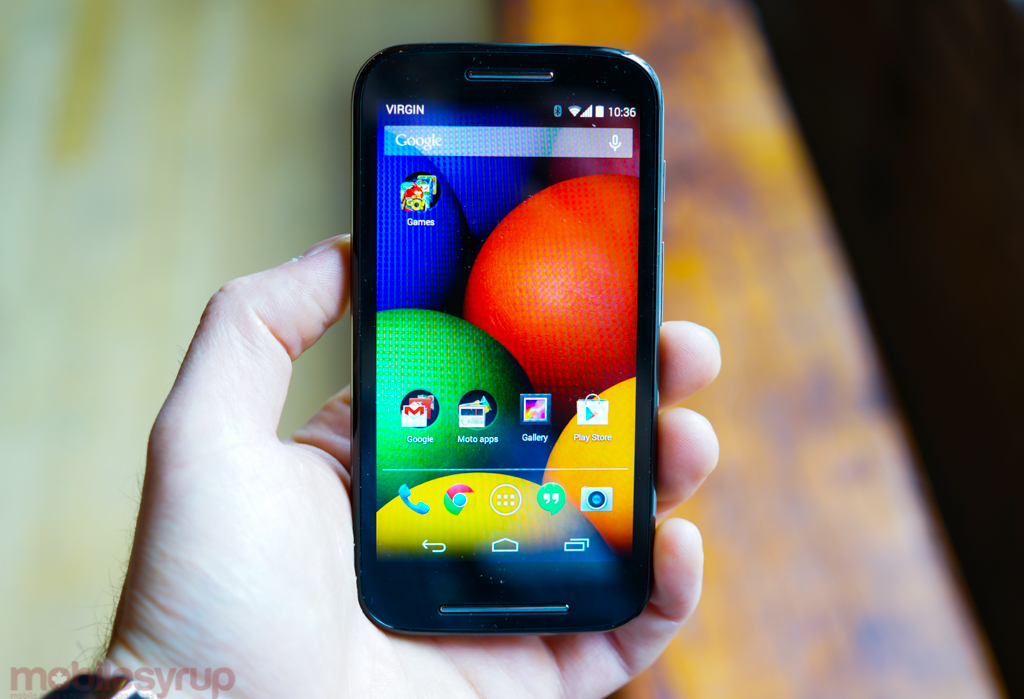
We got to spend some quality some with both of Motorola’s new products today — well, one is a new take on an old favourite — and came away impressed.
The Moto E is a much nicer device than anything I’ve used in the same price range, but there are some fundamental issues that, at least in Canada, would lead me to recommend the original Moto G — discounted to $150 at some carriers — over it in most cases.
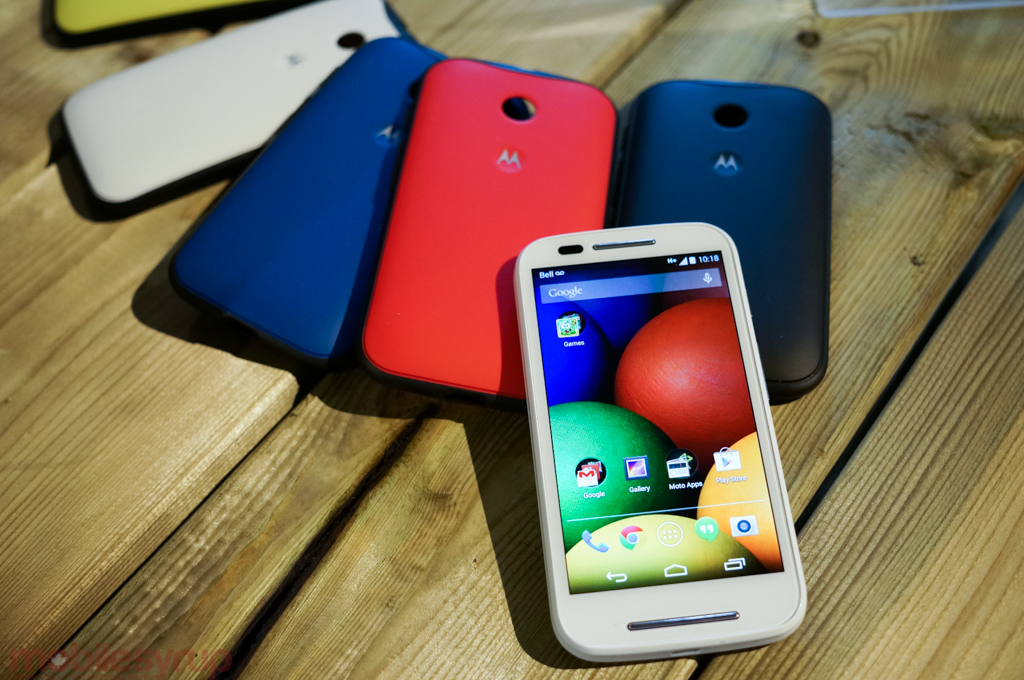
If you’ve used a Moto G, you know exactly what to expect with the Moto E. Slightly shorter, a little fatter, and not quite as fashion-forward, the Moto E is nevertheless a comfortable and capable smartphone. Its 4.3-inch qHD display is an IPS panel, and though it lacks the high pixel density of many modern premium smartphones, it is a notable improvement over most entry-levels from Samsung, LG and others.
I noticed immediately that the dual-core Snapdragon 200 processor produced performance that was considerably more sluggish than its quad-core Snapdragon 400 counterpart in the Moto G. Though they are practically identical parts, with the Moto E missing two of the four Cortex A7-based cores, Android clearly needs the extra horsepower when the cores are clocked this low. ARM’s Cortex-A7 architecture has found its way into many smartphones over the past year, but this is the first I’ve seen in a dual-core variety, and the chip shows its limitations.
While basic interactions with the OS were smooth enough, the Moto E was between 15% and 25% slower than the Moto G in CPU-intensive benchmarks. This shouldn’t prove a problem in day-to-day usage — after all, the device is aimed at converting feature phone users, most of which have never used a smartphone before — it does pose the question of whether the device’s performance will scale well with the guaranteed updates Motorola is promising.
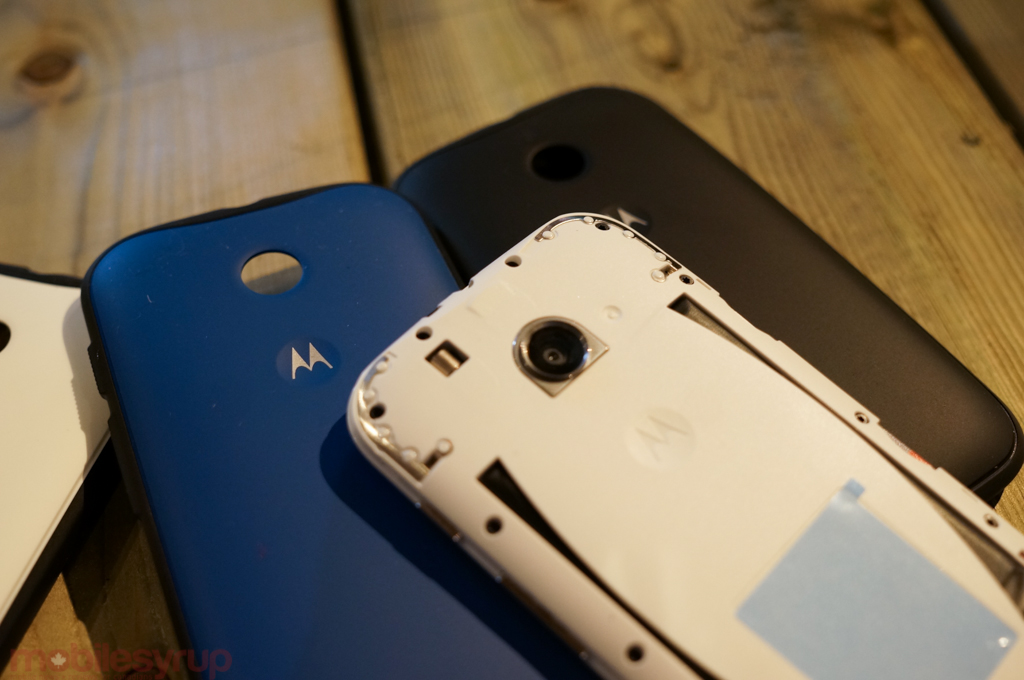
Also of concern is the low storage space. The Moto E comes with 4GB of internal storage, but only 2.2GB is usable out of the box. That leaves a very small window for app installations, and while there is a microSD slot, Google has severely hampered its functionality with the KitKat update. Users will still be able to install apps to the microSD card, but apps are limited to where they can store their content and, unlike internal storage, that data is automatically culled once the app is deleted.
For avid photographers, whom I believe the device will appeal to, this poses an issue. Motorola includes a utility to manually transfer media like photos, videos and music to the SD card, but the process is time- and labour-intensive.
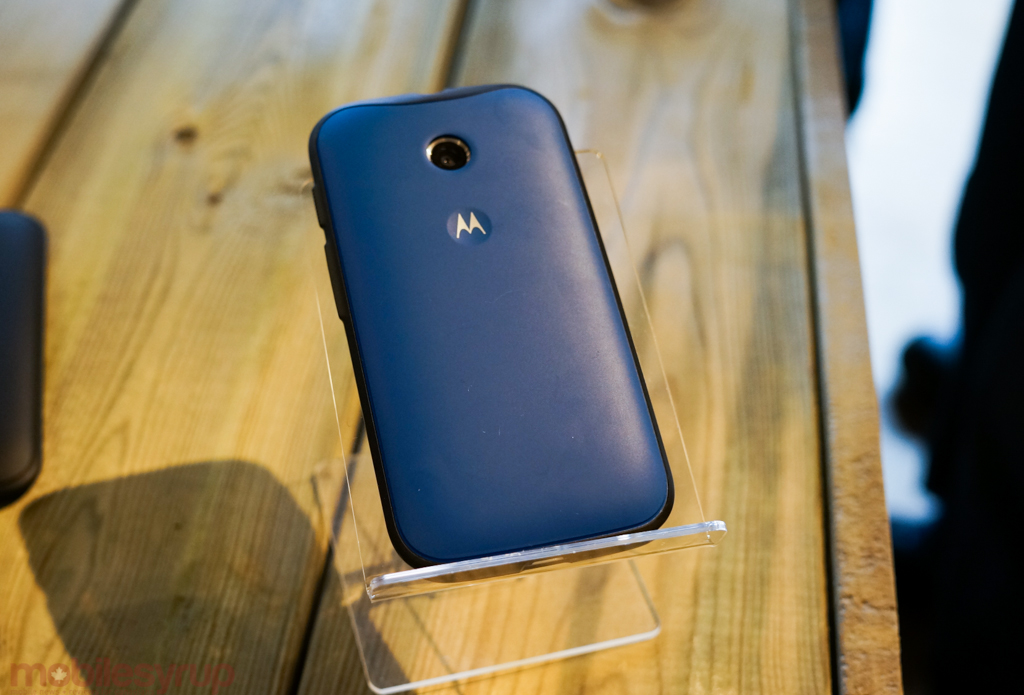
Those two concerns, which I front-loaded for a reason, don’t detract from the fact that this is an extremely well-made and compelling product for its price. The 5MP camera, which I had a short time to test, was surprisingly good, focusing quickly and capturing relatively sharp photos. It’s unclear whether this is the same sensor as the one in the Moto G, but at first glance it appears so.
The camera better be good, too, since it’s the only one; there is no front-facing sensor on the Moto E. This won’t pose an issue for the majority of people, and if there areas necessary to save costs I’m glad it was there and not by sacrificing the fidelity of the rear one.
Like the Moto G, the version of Android is about as unmolested as you’ll find on an OEM smartphone: Chrome is the default browser, but the AOSP messaging app, not Hangouts, is the default SMS client. Users will also discover a number of Motorola services on board, including Moto Assist, Alert and Migrate, along with the nice, one-touch camera app.
At $179, the Moto E is $50 more expensive in Canada than what it’s sold for in the U.S., but it hits that magical sub-$200 price point that makes it easy to justify buying on a whim. The device, like the Moto G, will come with optional backplates in a variety of colours, including a new Grip option that you see above. Coupled with the Gorilla Glass 3 screen and water resistant coating, the Moto E could be that smartphone you buy your clumsy 11 year-old — or your clumsy self.
This is the new Motorola, a company that understands it though cannot win in the high-end against Samsung and Apple, it can change the definition of what it means to buy a low-cost smartphone. The company constantly reiterated that it was one of the only companies producing high-quality, low-cost devices that run the latest version of Android, and if more people were to buy the Moto G or Moto E over the equivalent Samsung or LG in the same price range, not only would they get a better experience, but a regularly-updated one, too.
The Moto E is interesting not necessarily for its specs, but for its ability to carve out a product category that has, in North America at least, been practically non-existent to date. With the introduction of two-year contracts, users are paying more for devices, both subsidized and outright, and Motorola’s product line is the gateway to that compromise.
Coming to select retailers at an unknown date in June, the Moto E is going to sell very, very well, as it deserves to.
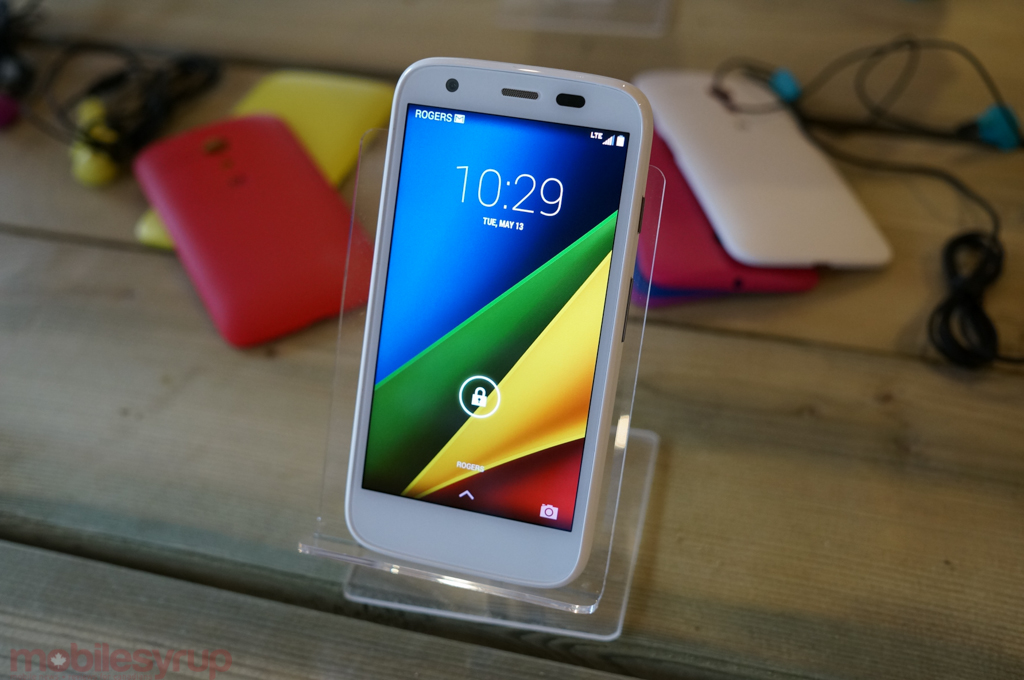
As for the LTE Moto G, well… it’s the same phone, slightly faster connectivity.
Coming to Rogers and Fido on June 17th for $224.99 on a month-to-month term and $0 on most 2-year plans, the updated model addresses the new main pain points from the original: lack of LTE and no expandable storage. While the device will still default to 8GB of internal storage — the 16GB model is limited to HSPA+ for now — users can now augment that space with a microSD slot up to 32GB.
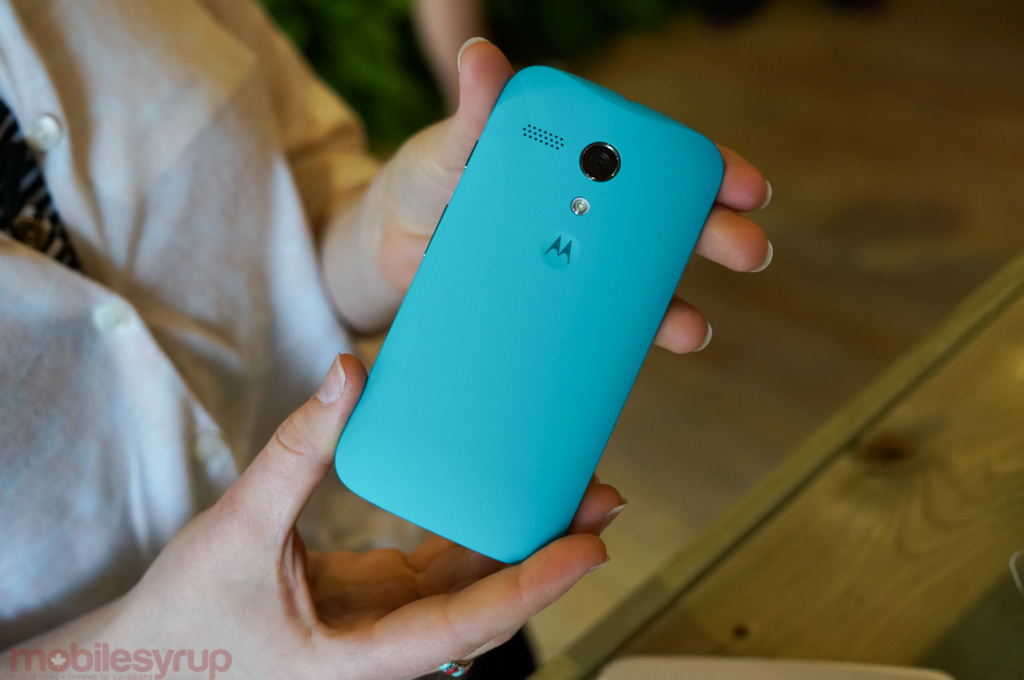
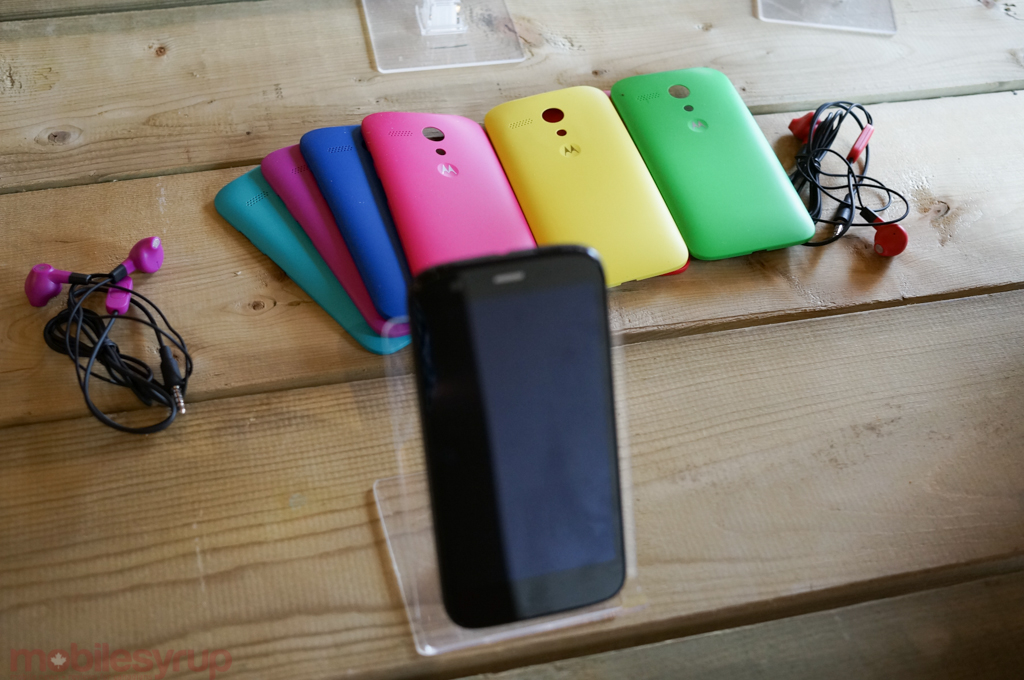
MobileSyrup may earn a commission from purchases made via our links, which helps fund the journalism we provide free on our website. These links do not influence our editorial content. Support us here.


